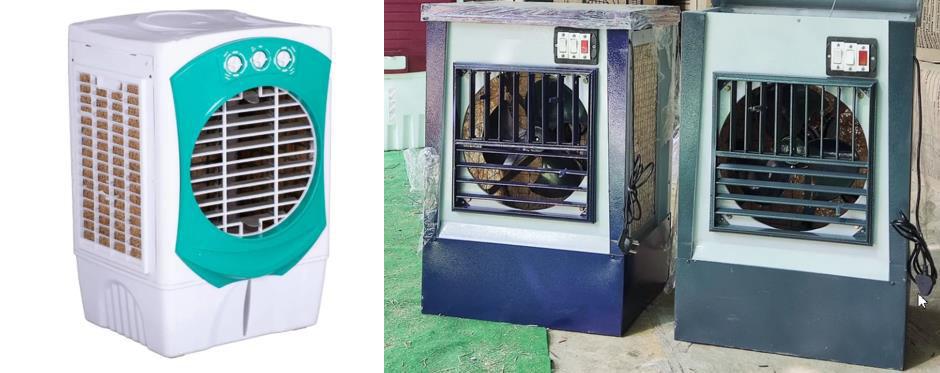Plastic Air Coolers vs. Metal Coolers: Why
Wholesalers Are Choosing Plastic Models
In the competitive world of home appliances, especially in regions where summers are long and harsh, air coolers play a crucial role in providing economical and eco-friendly relief. Among the types available, plastic air coolers vs. metal coolers is an ongoing debate. However, a clear trend is emerging wholesalers are increasingly leaning towards plastic models. But what’s driving this shift?
Let’s explore the key differences between plastic and metal air coolers and why plastic variants are now becoming the go-to option for many in the wholesale market.

Plastic vs. Metal Air Coolers – What’s the Difference?
Traditionally, metal coolers, often made of galvanized steel or aluminum, were seen as more durable and robust. They’ve been widely used in industrial and heavy-duty residential settings due to their sturdy build.
Plastic air coolers, on the other hand, are made from high-grade polymers and engineered plastics. Initially viewed as less durable, today’s models are far more advanced and competitive in terms of efficiency, lifespan, and performance.
Here are some of the primary differences between the two:
Material Durability: While metal might seem stronger, it's prone to rust, especially when constantly exposed to moisture which is inevitable in air coolers. Plastic coolers are rust-proof and retain their look and functionality much longer.
Weight and Mobility: Metal air coolers are heavy and often require more effort to transport or relocate. Plastic coolers are lightweight and easy to move, making them more versatile for use in different rooms or spaces.
Aesthetic Appeal: Modern plastic coolers are designed with aesthetics in mind. They’re sleek, stylish, and available in multiple designs and colors features that metal coolers often lack.
Maintenance Needs: Plastic coolers are easier to clean and maintain. Metal surfaces, especially when rusted or scratched, require more effort and often need repainting or rust-proofing.
Why Plastic Air Coolers Are Becoming the Preferred Choice for Wholesalers in Bhiwadi (Rajasthan) and Haryana
1. Cost-Effectiveness and Higher Profit Margins
Plastic coolers generally cost less to produce, thanks to injection molding technology and lightweight material sourcing. For wholesalers, this means better profit margins and the ability to offer competitive pricing to retailers and end consumers.
2. Increased Consumer Demand
Consumers today prefer products that are easy to use, visually appealing, and low maintenance. Plastic coolers tick all these boxes. Their rising popularity among end users has made them a hot item for wholesalers to stock.
3. Longer Shelf Life and Lower Returns
Rust and corrosion can severely affect the resale value and performance of metal coolers. Plastic coolers do not face these issues, which results in fewer product returns or complaints a major concern for wholesalers dealing in bulk quantities.
4. Adaptability in Design
Manufacturers can mold plastic into various shapes and integrate new features with ease. This flexibility allows brands to innovate faster with plastic models offering touch panels, smart features, and sleeker designs all of which appeal to a modern buyer.
5. Reduced Transportation Costs
Due to their lighter weight, plastic coolers are cheaper to transport and easier to handle in large volumes. This is a significant cost-saving factor for wholesalers, especially those distributing across large geographical areas.

